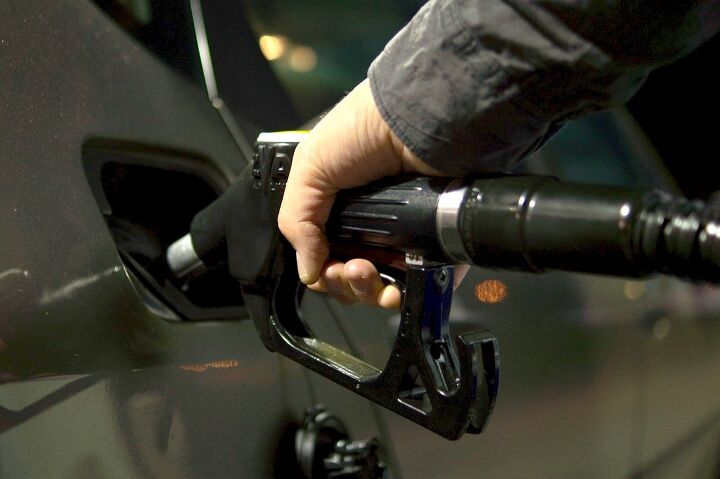With a Week to Go in Obama Administration, EPA Sets 2025 Fuel Economy Targets in Stone

Environmental Protection Agency administrator Gina McCarthy has decided to maintain current emissions and fuel economy standards through 2025, cementing a central pillar of the Obama administration’s green legacy.
Many automakers have been critical of Obama’s rather strict climate policies and were hopeful that President-elect Donald Trump might roll back some of the more stringent regulations. Of the policies, none is more controversial than the corporate average fuel economy (CAFE) mandate, which began a midterm review earlier this year.
While the EPA’s ultimate determination wasn’t due until April of 2018, choosing not to alter 2025 vehicle emission and CAFE rules effectively locks in the standard before Trump can take office.
McCarthy explained that her decision, which institutes a legal means to maintain the fuel efficiency rules, rests entirely on the facts.
“My decision today rests on the technical record created by over eight years of research, hundreds of published reports including an independent review by the National Academy of Sciences, hundreds of stakeholder meetings, and multiple opportunities for the public and the industry to provide input,” said McCarthy in her official statement.
“At every step in the process the analysis has shown that the greenhouse gas emissions standards for cars and light trucks remain affordable and effective through 2025, and will save American drivers billions of dollars at the pump while protecting our health and the environment.”
The agency believes that the standards, which requires an average fleet-wide light vehicle fuel efficiency of 54.5 miles per gallon by 2025, will result in consumer EPA window stickers surpassing 36 mpg for passenger cars and light-trucks. That’s more than 10 mpg higher than the fleet averages of today. The mandatory improvement in economy is also estimated to diminish U.S. oil consumption by around 2.4 million barrels a day — a 10 percent reduction of America’s total petroleum consumption.
While environmentalist groups are chuffed to hear that the adjudication won’t be undone by the next POTUS, those in the automotive industry are less pleased to see the inflexible standards remain.
“The EPA decision is disappointing,” said Gloria Bergquist, a spokeswoman for the Alliance of Automobile Manufacturers, which had been urging the agency to reconsider. “Our fundamental priority remains striking the right balance to continue fuel economy gains and carbon reduction without compromising consumer affordability and vital auto-sector jobs.”

A staunch consumer advocate tracking industry trends and regulation. Before joining TTAC, Matt spent a decade working for marketing and research firms based in NYC. Clients included several of the world’s largest automakers, global tire brands, and aftermarket part suppliers. Dissatisfied with the corporate world and resentful of having to wear suits everyday, he pivoted to writing about cars. Since then, that man has become an ardent supporter of the right-to-repair movement, been interviewed on the auto industry by national radio broadcasts, driven more rental cars than anyone ever should, participated in amateur rallying events, and received the requisite minimum training as sanctioned by the SCCA. Handy with a wrench, Matt grew up surrounded by Detroit auto workers and managed to get a pizza delivery job before he was legally eligible. He later found himself driving box trucks through Manhattan, guaranteeing future sympathy for actual truckers. He continues to conduct research pertaining to the automotive sector as an independent contractor and has since moved back to his native Michigan, closer to where the cars are born. A contrarian, Matt claims to prefer understeer — stating that front and all-wheel drive vehicles cater best to his driving style.
More by Matt Posky
Latest Car Reviews
Read moreLatest Product Reviews
Read moreRecent Comments
- Jeff “So, the majority of our products are either ICE vehicles or intended to utilize those multi-energy platforms that we have. This is a great opportunity for us, compared to our peers, having the multi-energy platforms for all of our products in development and having the agility to move between them,” she said. From what is stated about the next generation Charger it will be released as a 2 door EV and then as a 4 door with the Hurricane turbo straight 6. I assume both the 2 door and 4 door is on the same platform.
- Brendan Duddy soon we'll see lawyers advertising big payout$ after getting injured by a 'rogue' vehicle
- Zerofoo @VoGhost - The earth is in a 12,000 year long warming cycle. Before that most of North America was covered by a glacier 2 miles thick in some places. Where did that glacier go? Industrial CO2 emissions didn't cause the melt. Climate change frauds have done a masterful job correlating .04% of our atmosphere with a 12,000 year warming trend and then blaming human industrial activity for something that long predates those human activities. Human caused climate change is a lie.
- Probert They already have hybrids, but these won't ever be them as they are built on the modular E-GMP skateboard.
- Justin You guys still looking for that sportbak? I just saw one on the Facebook marketplace in Arizona


































Comments
Join the conversation
The regulations can be reversed through the same process as they were enacted. The new administration at the EPA has to publish the new regulations (or the reversal of the old regs) in the Federal Register, giving a specified time for comments. Once that period is up, they then can make the new regs final, while responding to comments (pound sand, etc).
Obama's 2025 EPA fuel economy targets are set in stone just like his Syrian red line. More than 400,000 people have been slaughtered in Syria many of them women and children. Thanks Obama. You won't be missed. Only 4 More Days!!!!